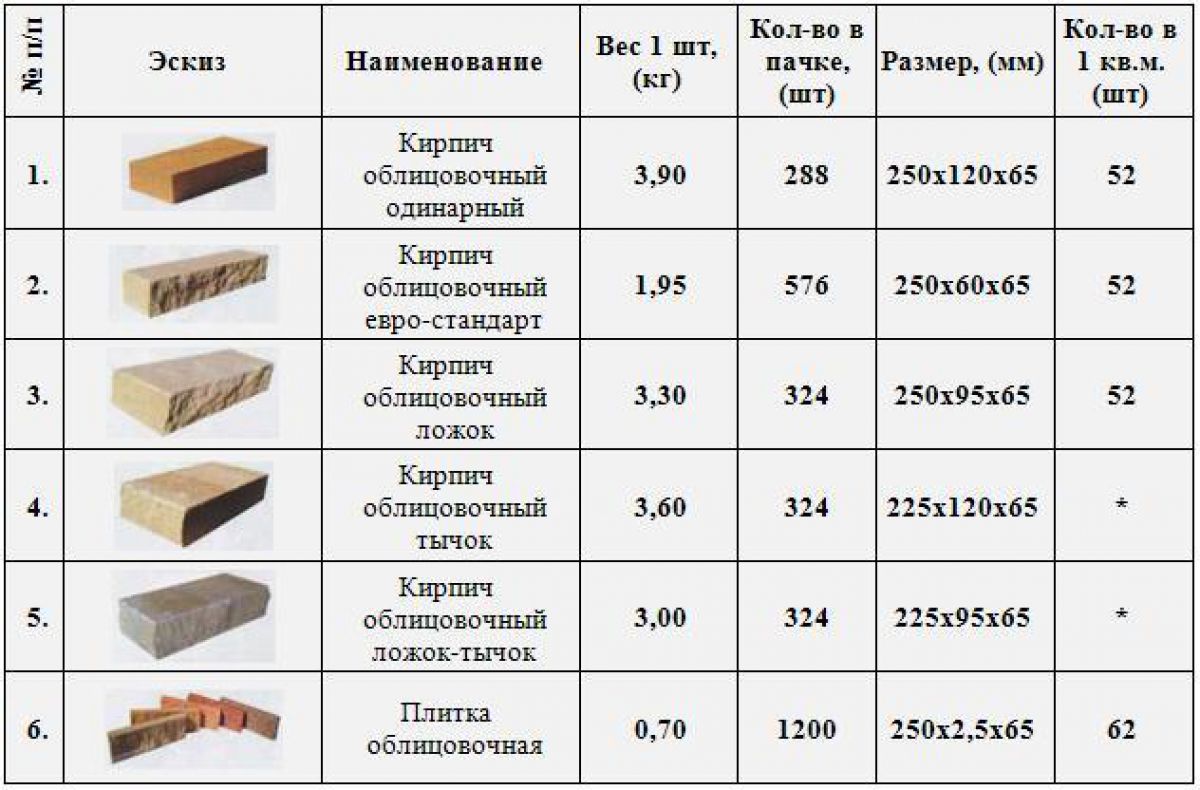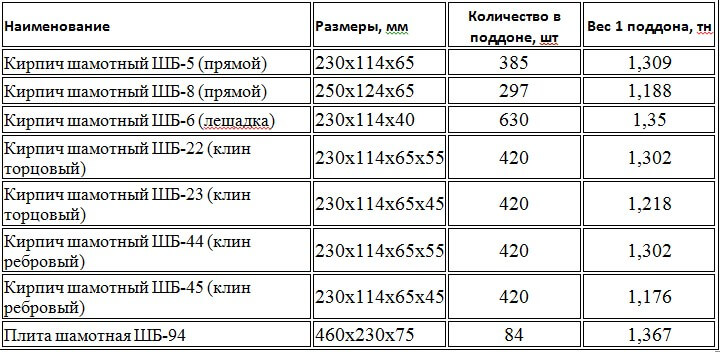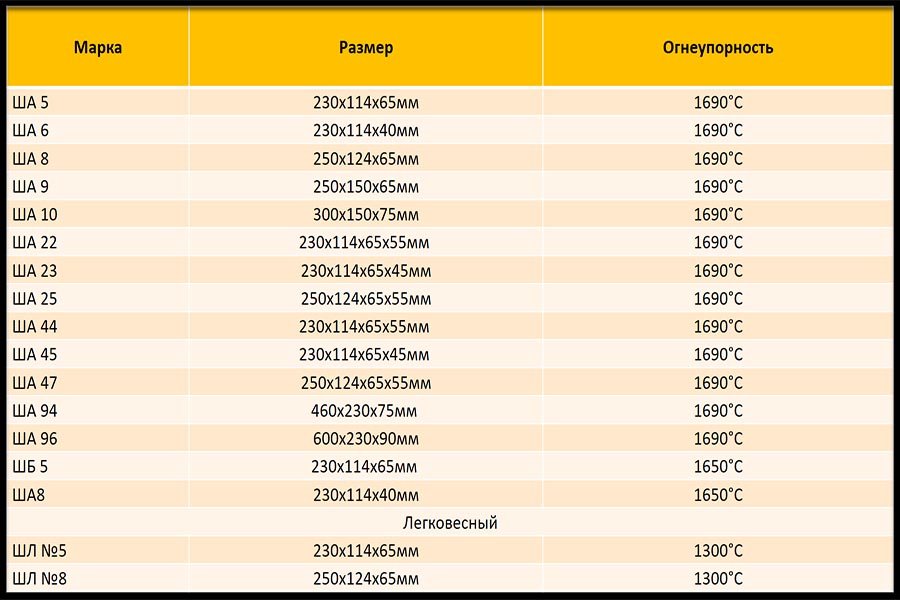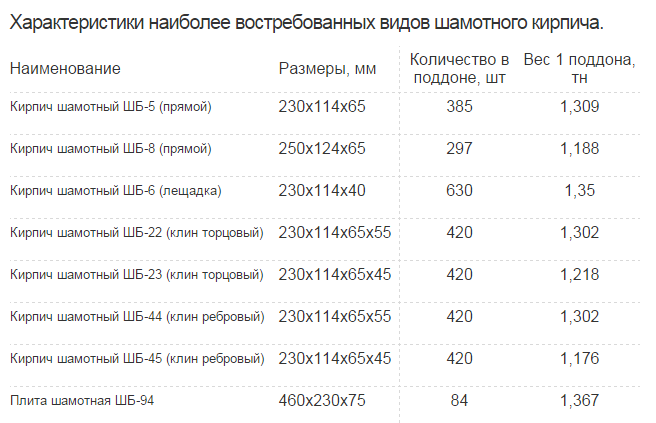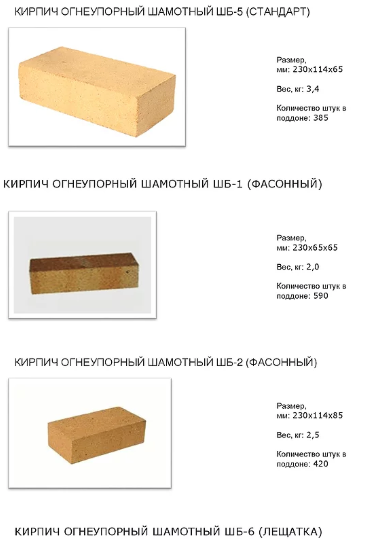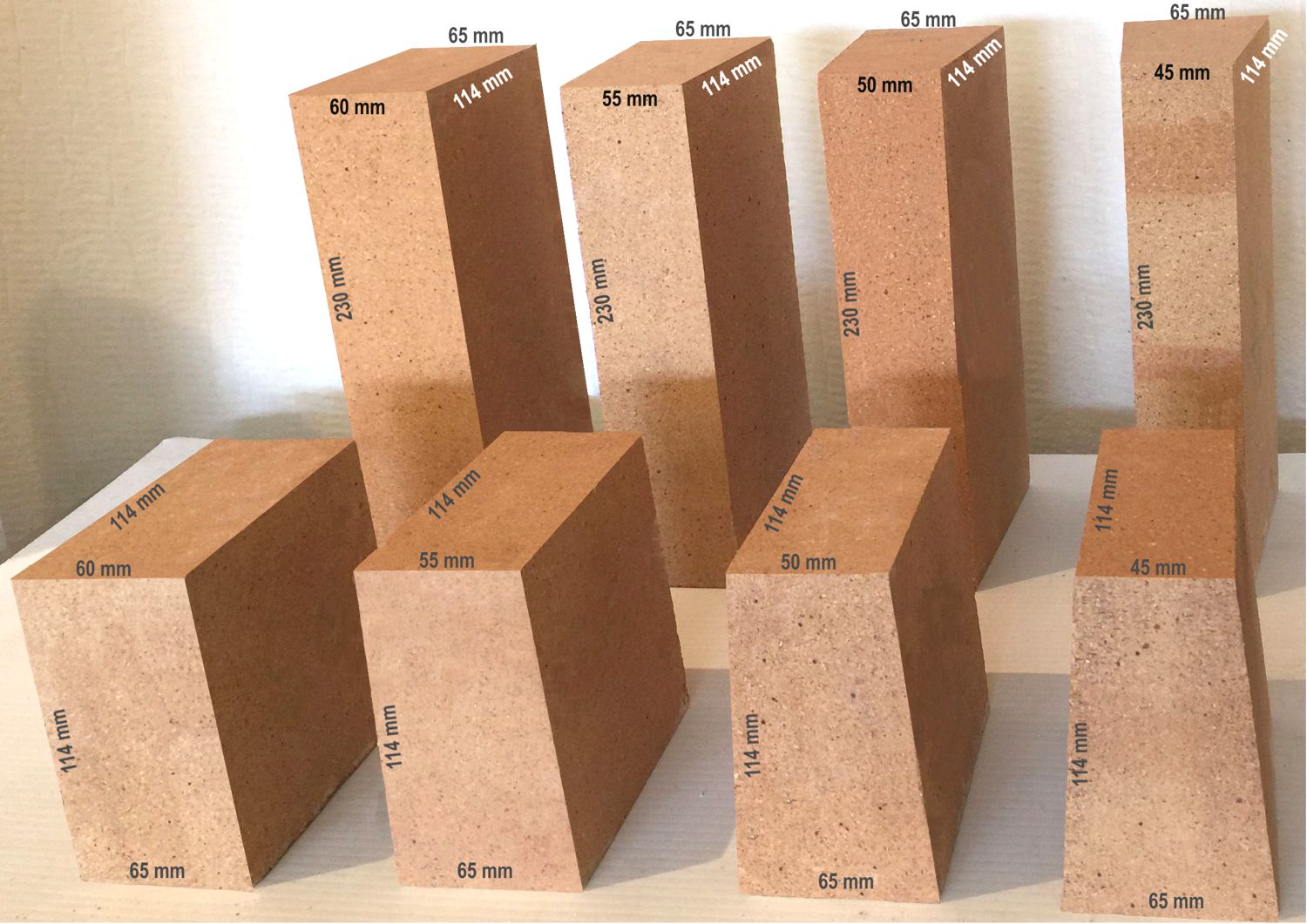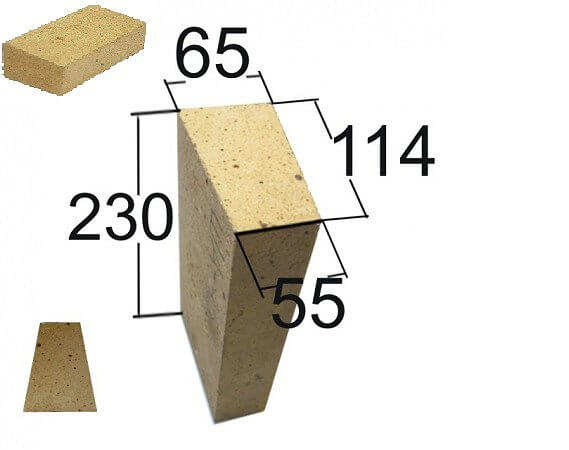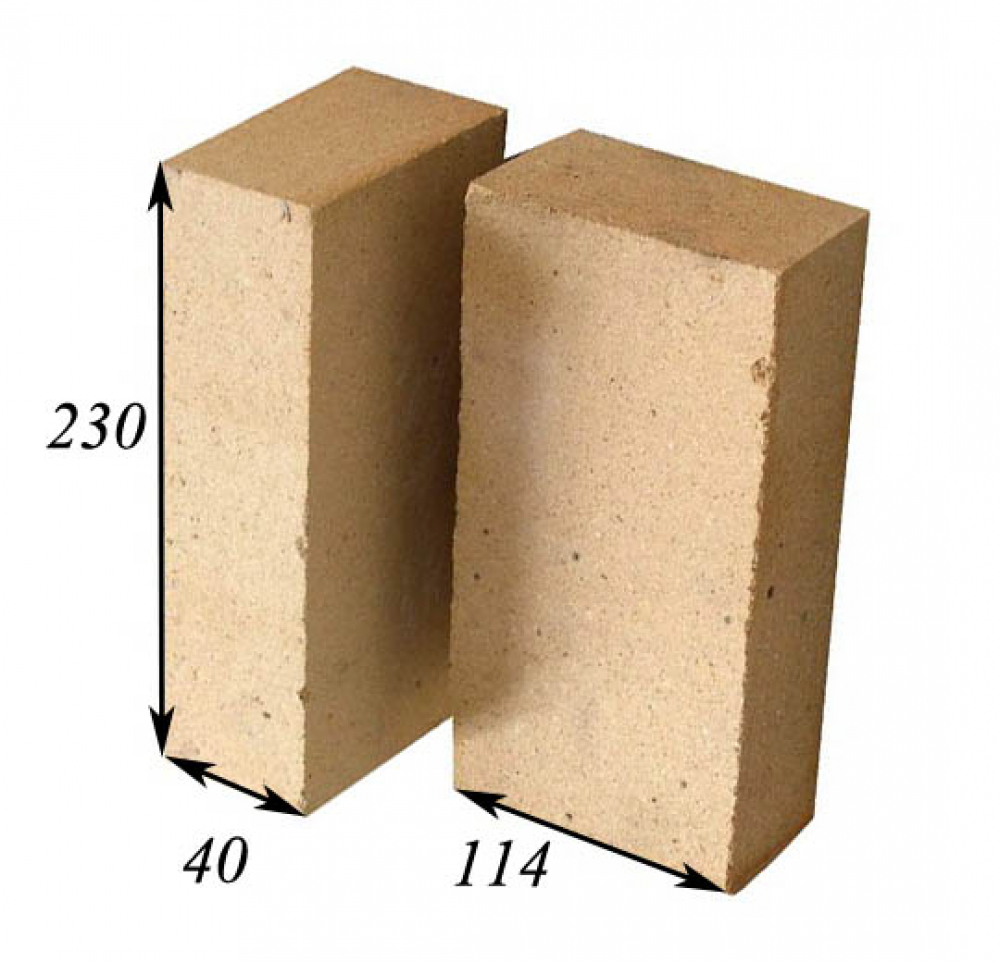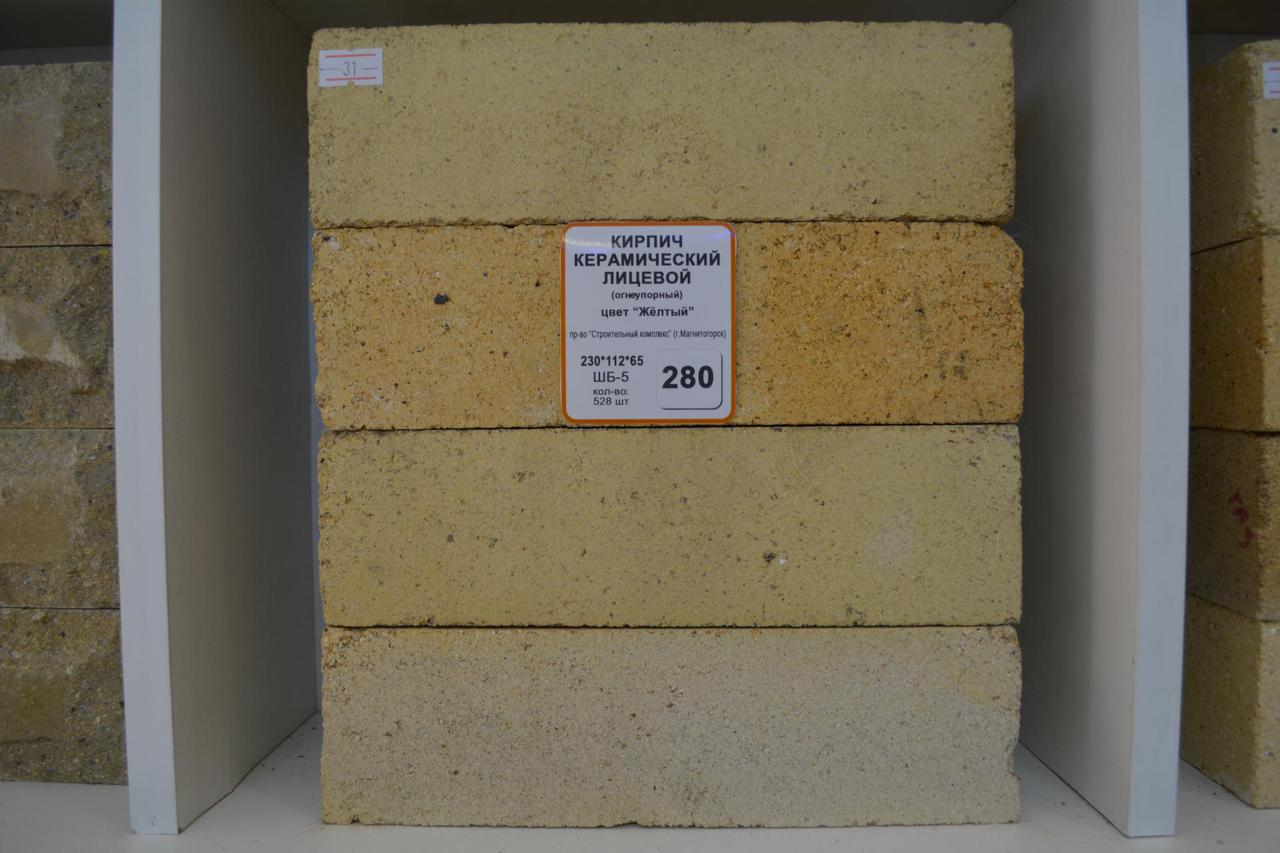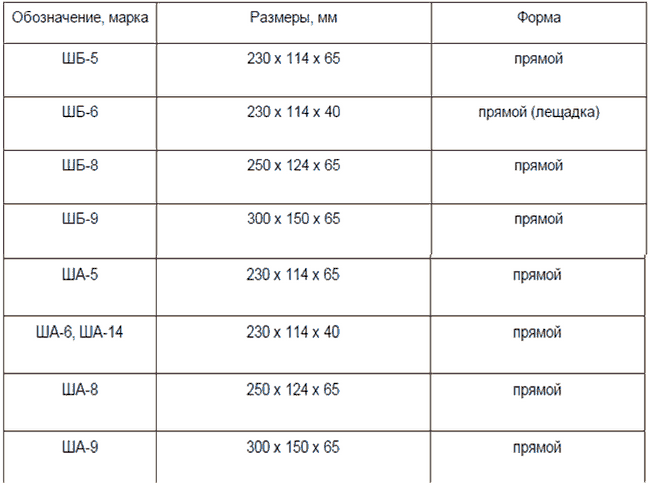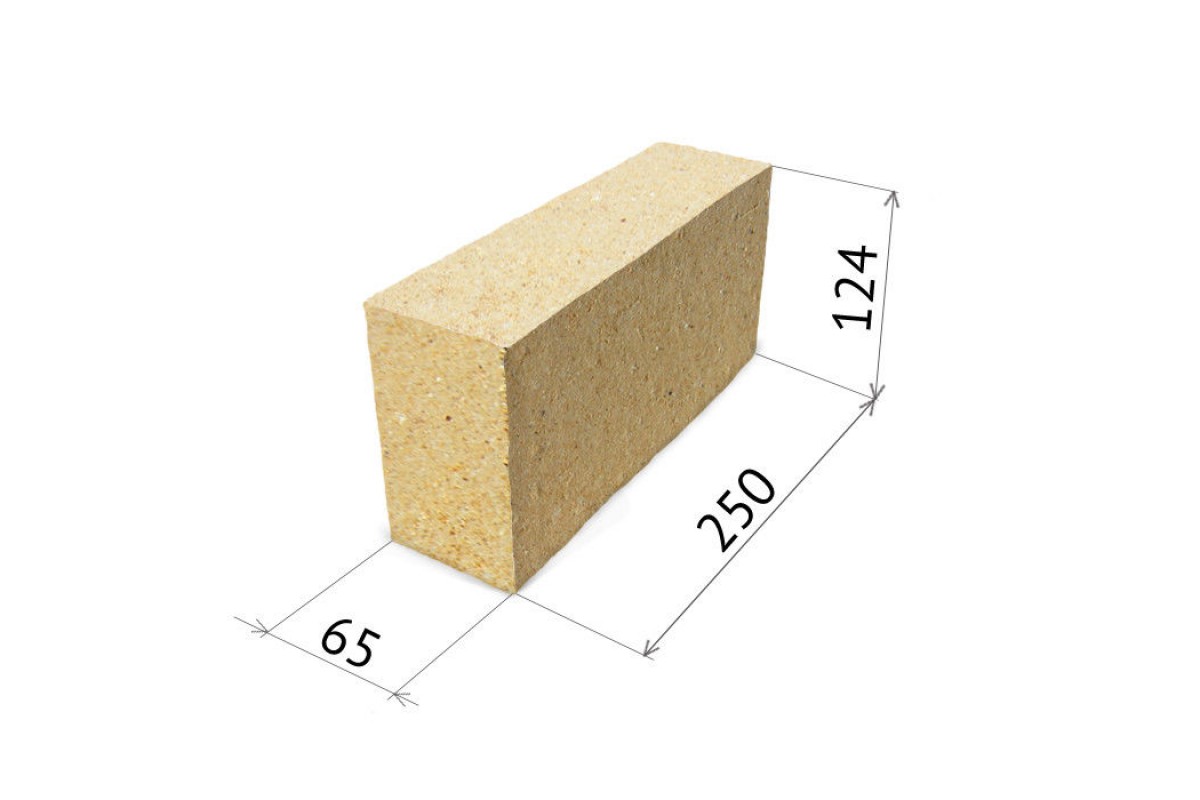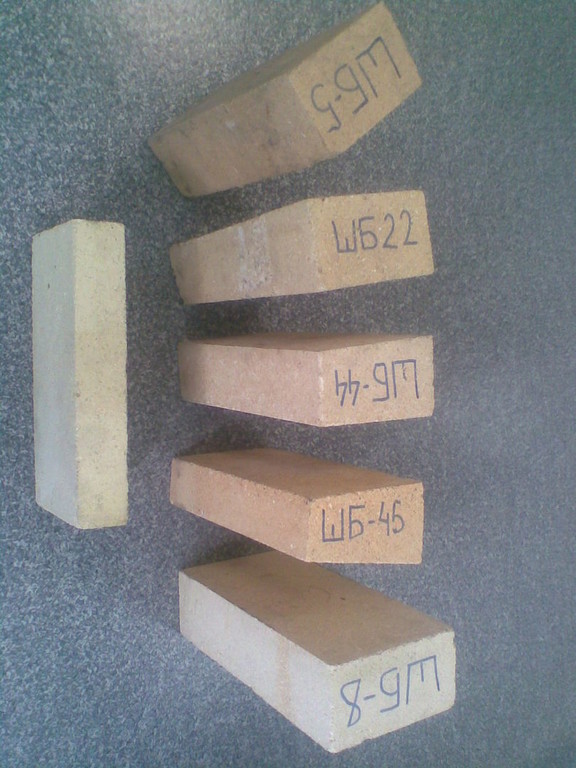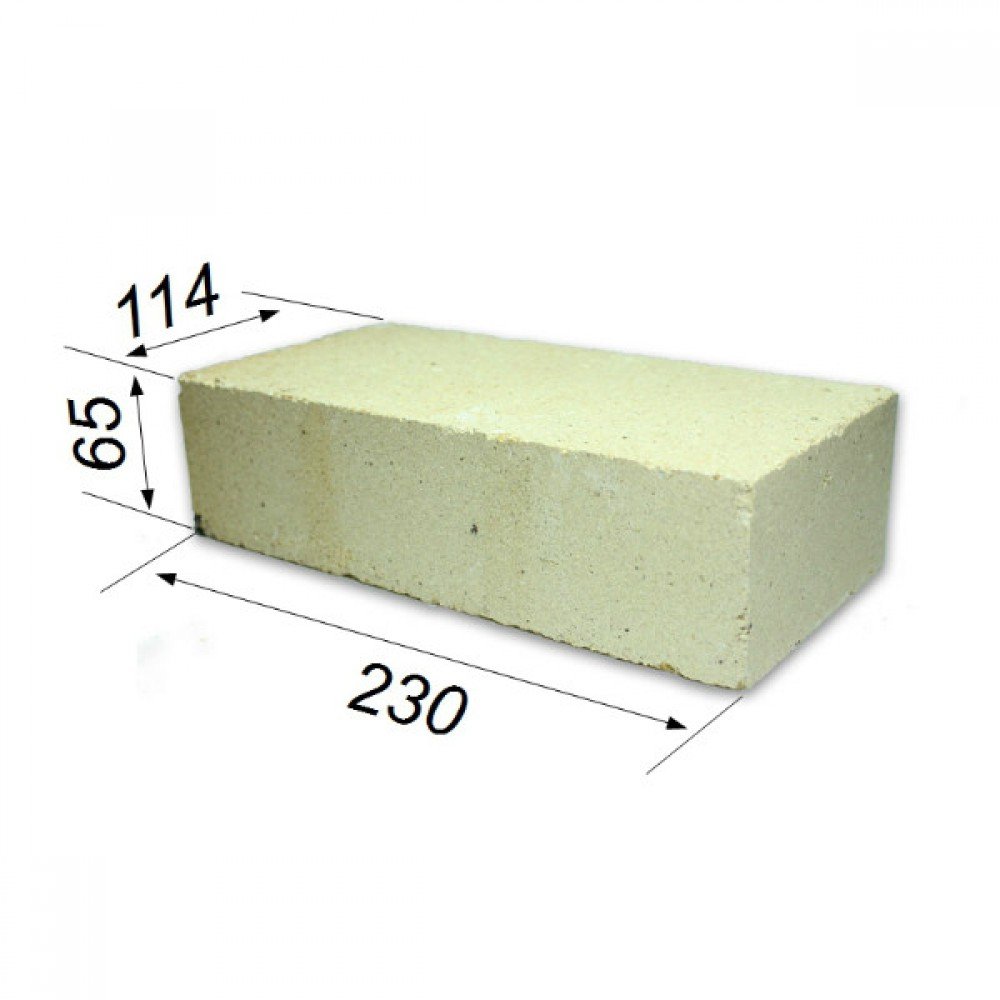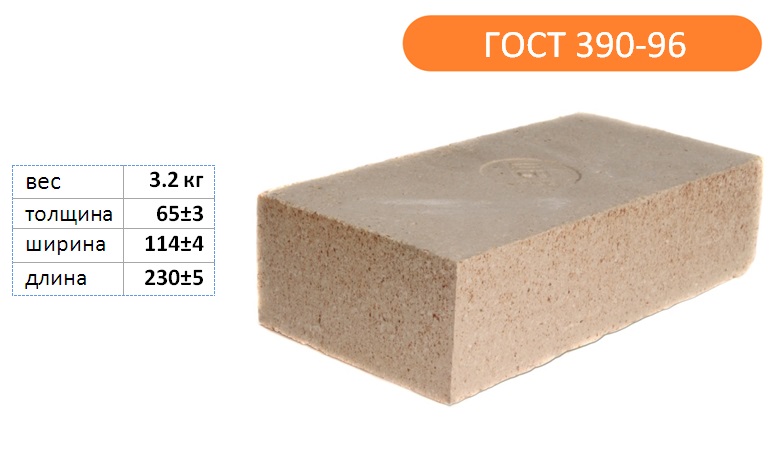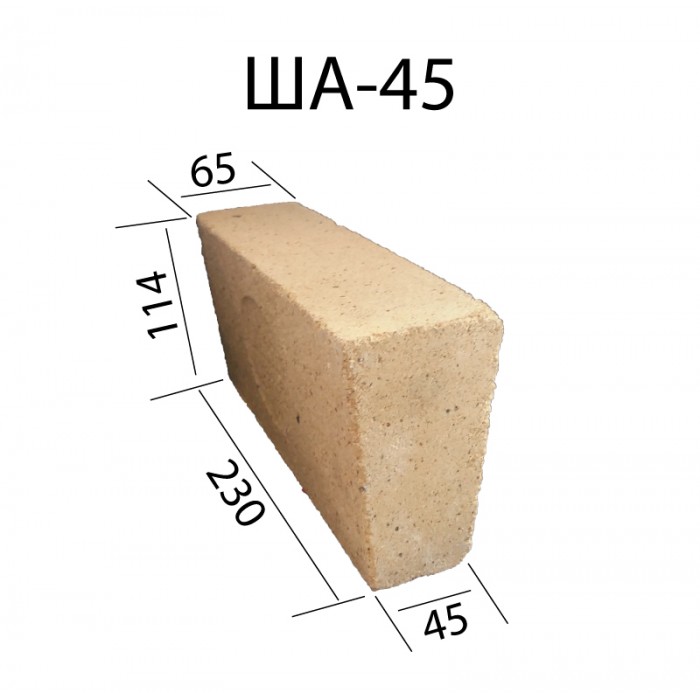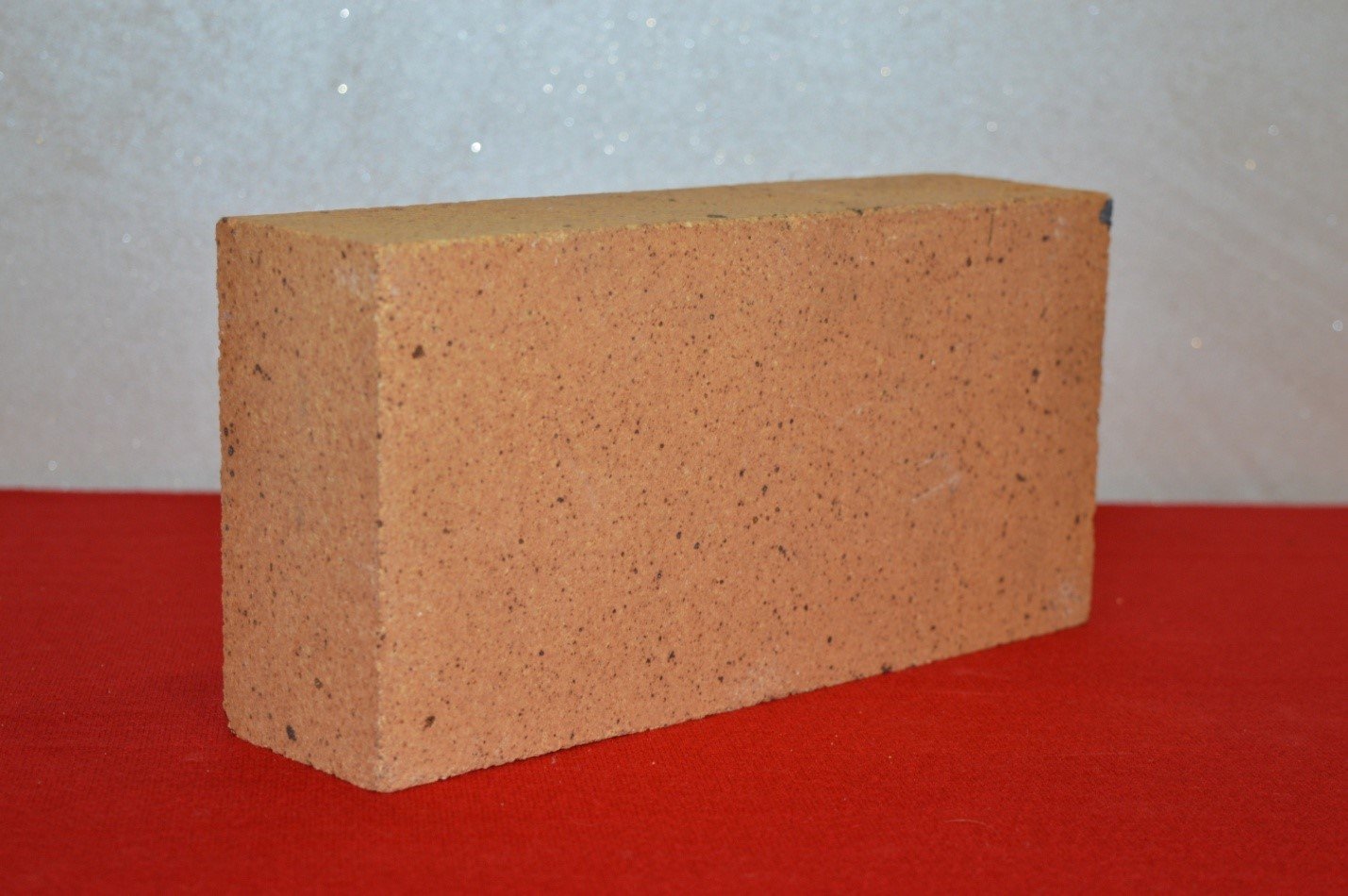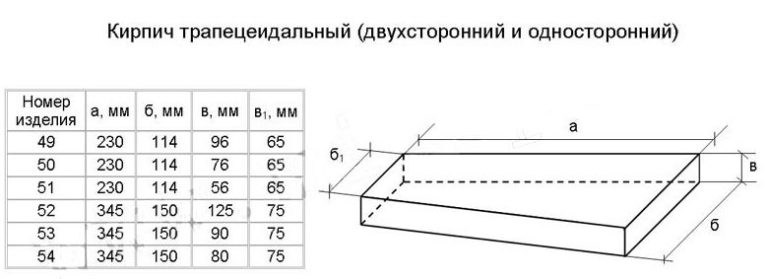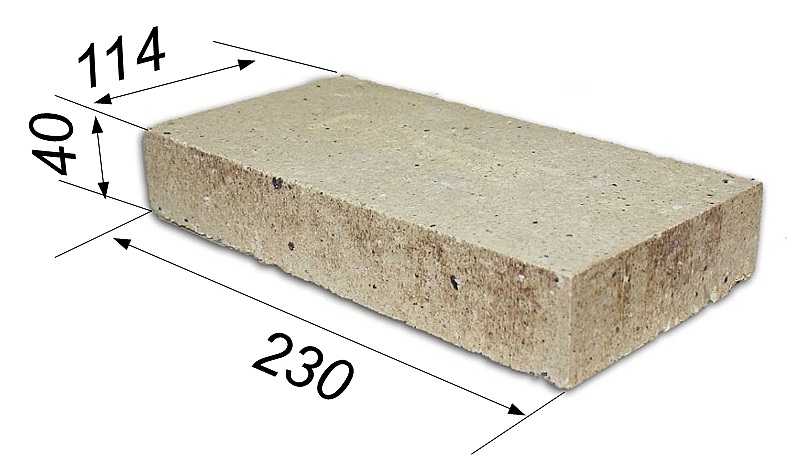Manufacturing technology
Among all types of bricks, fireclay is the most durable and resistant to strong heat and temperature extremes. The material owes these qualities to its composition and specific manufacturing technology, which consists in firing a clay mixture with the addition of chamotte powder. As a result of exposure to high temperatures, the brick acquires a characteristic gray-brown or yellowish color, by which it is easy to distinguish it from other varieties.
The composition of fireclay bricks determines its performance characteristics. Depending on the proportions of clay and powder, several types of material are distinguished. A colossal role is played by the method of processing, or rather, the time of baking the bricks. So, if you overexpose it in the oven, then a strong glassy film forms on the surface, which will make the brick incredibly strong, but less refractory. If it is not fired for a long time, then such a material will absorb and retain moisture well, but it will completely lose its strength. Only if you stick to the "golden mean", you can make a brick, ideal for laying stoves and fireplaces.
To prevent the products from cracking during firing, a certain amount of special refractory clay - chamotte - is added to them. Sometimes coke powder, graphite or coarse-grained quartz are placed instead. The result is different types of bricks with individual characteristics. Moreover, the result depends not only on the raw material and the processing method, but also on the characteristics of the fuel for burning and the resulting ash.
The production of fireclay bricks is carried out in accordance with GOST 390-69, and depending on what it will be used for, the production technology, weight and dimensions of the material differ. So, the mass of fireclay bricks can vary from 2.5 kg to 6 kg. Differences also lie in the density, porosity and composition of the bricks. There are uniform size standards that most manufacturers adhere to: 230x113x65 mm, 250x123x65 mm and 300x150x65. These are the most convenient dimensions for construction and transportation.
The most frequently used brands of fireclay bricks are: ШБ №5, ШБ №9, ШБ №22, ШБ №44, ШБ №47. The letters in front of the number can be different, for example, PB, SHB, SHUS, SHL and others, but for domestic use it is better to choose bricks marked "ШБ". The first letter indicates that the brick is chamotte, the second means to which class of refractoriness it belongs, and the number is the aspect ratio.
Lightweight brick
Lightweight fireclay brick has established itself as a good insulation. It contains peat, oily clay, sawdust and other organic components. During the firing process, they burn out, leaving behind pores of various sizes. This manufacturing technology makes it possible to obtain a very lightweight porous material with high energy-efficient characteristics.
Since lightweight bricks are made entirely from organic matter, they are environmentally friendly materials that cannot harm human health or the environment. At the same time, high refractoriness remains - the brick can withstand extremely high temperatures up to 1800 ° C.
Lightweight bricks can be rectangular or wedge-shaped in shape. In order for the material to fully retain all its operational properties, it must have the correct structure with smooth edges and perfectly right angles.
There are several types of lightweight bricks, depending on the scope:
- trapezoidal;
- shaped;
- straight;
- rib wedge;
- end wedge.
The marking of lightweight bricks is indicated by the letters SHL and SHTL (T is the presence of talc in the composition). It is usually used to create an insulating layer in the construction of electric furnaces, heaters, evaporators, steam pipelines, heat exchange boilers, etc. Such protection can significantly reduce heat loss by 20-70%, reduce the mass of thermal devices and their dimensions. If you buy fireclay bricks for building or lining a furnace, the heating and cooling time will be reduced by 5 times, and fuel costs will decrease by 10% in continuously operating furnaces and by as much as 45% in periodically operating ones.
How much does fireclay brick weigh?
Refractory fireclay brick differs from other materials in its increased resistance to heat and temperature changes. Also, one of its main advantages is the ability to store heat for a long time. Due to its characteristics, it is used for the construction of both conventional fireboxes and stoves in private buildings, and industrial facilities.

The limited range of use is due to a number of features of this refractory brick:
- rather high cost;
- the need to use a special high-quality mortar when laying;
- due to its high density, the material is difficult to cut;
- hygroscopicity - absorbs moisture well, which leads to an increase in weight and a decrease in strength characteristics.

Fireclay bricks are made by firing a homogeneous mixture consisting of refractory clay (fireclay) and coke or graphite powder until the complete loss of elasticity. It differs in shape, size, weight, as well as density and porosity. It can be rectangular and shaped (wedge and trapezoidal, complex configurations), large and small dimensions. Piece chamotte products are marked depending on the class of refractoriness, maximum thermal load. The number indicates the aspect ratio. The most commonly used brands are ША and ШБ.

According to GOST 390-96, the weight of one brick of standard sizes varies from 3.4 (for 230x114x63 mm) to 4 kg (250x124x65). It is directly affected by porosity. Examples of the dependence of weight on dimensions and shape for fireclay products of brands ША and ШБ are given in the table:
The relatively small mass of fireclay refractory bricks can significantly reduce the load on the foundation without affecting the operational properties. Weight also affects the heat engineering features: the lower it is, the higher the thermal conductivity, therefore, the better the moisture absorption and the stronger the adhesion with the solution.

When buying fireclay bricks, special attention is paid to strength and adherence to firing technology. If you gently hit with an iron object, a ringing sound should be heard
After a strong blow, a well-made product will fall apart into several large pieces, and will not crumble
It is important that the middle of the brick is not too dark - this is a sign of non-compliance with the firing technology
You should choose a product without chips and cracks, with a uniform shade over the entire surface, of the correct geometric shape (permissible misalignment is not more than 2 mm). Of the several options, it is better to prefer the heavier one - it is denser and, accordingly, stronger. You also need to make sure that the brick is stored in the correct conditions. It should be placed in a dry, ventilated area on wooden pallets.
Silicate brick belongs to the category of artificial building materials for the construction of vertical enclosing structures. The characteristics are excellent.
Ceramic brick is a well-known leader among building materials intended for the construction of walls, fences, columns and others.
Commoners perceive white brick exclusively as an ordinary building material. But it can also serve as a decoration.
Features of fireclay brick masonry
The main feature is that the usual cement mortar for laying this type of brick is not used, since it does not have sufficient heat resistance.
Refractory brick masonry mortar
In hardware stores, you can purchase a ready-made composition that has all the necessary properties, namely:
- glue for laying fireclay blocks has sufficient heat resistance;
- after drying, the properties of the material are similar to the parameters of the brick itself;
- the material has good adhesion to fireclay blocks.
If for some reason it was not possible to buy a ready-made composition, you can make it yourself, for this you will need:
- finely ground fire-resistant clay;
- fireclay sand;
- purified water.
The solution is prepared in the following sequence:
- Fire-resistant clay is filled with water for 24 - 72 hours and mixed periodically.
- The settled clay is wiped with a mesh with a cell of no more than 3x3 mm.
- The sand is sieved and added to the clay in the ratio of 2 parts of sand to one part of clay. The resulting composition is thoroughly mixed.
- Water is added to the resulting mixture and mixed again. The ready-to-use solution should have the consistency of sour cream.
- You can improve the quality of the mixture by adding 3% water glass or salt.
Features of masonry heat-resistant blocks
There are a number of rules, the observance of which will ensure high-quality and durable masonry:
- the starting row is laid "dry", without the use of an adhesive. When laying subsequent rows, an adhesive mixture is applied to the lower and end surfaces, so that the thickness of the finished seam after laying does not exceed 5 mm;
- as soon as the adjustment of the brick is completed, the excess mortar should be removed immediately;
- the strength of the structure is ensured by stacking blocks with overlapping (staggered);
- seams must be sealed flush with the side of the blocks. Depressions and unfilled seams will inevitably lead to cracks;
- when laying corners and decorative elements, the blocks are stacked with the front side out;
- cutting fireclay bricks should be carried out with a grinder equipped with a diamond saw blade; using a trowel or pickaxe to correct the size is highly undesirable;
- the finished structure does not need any additional processing with special compounds, primers, etc.
Strict adherence to these simple rules will ensure a long service life and reliability of the structure.
Since structures operating in conditions of high and extreme temperatures are classified as especially critical, the correct choice of material is of particular importance. The use of fireclay bricks provides high heat resistance, resistance to mechanical stress and sufficient fire safety of the structure. In addition, one should not forget that the use of ordinary ceramic or silicate bricks when laying heat-resistant elements will not only not give the desired results, but also significantly increase the risk of fire.
Types, forms, brands and purpose
According to the method of forming brick blocks, types of fireclay stone are cast from slip, made by a semi-dry or plastic method, fused, hot-pressed and thermoplastic-pressed. According to the geometric shape, such subgroups of fireclay oven bricks are distinguished:
- Straight - rectangular with smooth edges.
- Trapezoidal.
- Wedge-shaped brick, it is also arched or arched:
- wedge rib;
- wedge end.
- Shaped - has a wide selection of shapes, allows you to erect structures of complex design.
- Suspended - used for industrial furnaces.
The kiln brick has a wide range of applications and, according to GOST, there is a marking on each block. The first capital letters are the designation of the material in the composition and the fire resistance class. After them there is a number that indicates the block size. For example, brick ША-5 contains 30% aluminum oxides, and the size is 230 × 114 × 65 mm.Brick ША-8 is the same in composition, the only difference is in size - 250 × 124 × 65 mm. After the designation of the dimensions, the abbreviation of the manufacturer is put.
Grades of bricks used in private construction
ША, ШБ - have a fire resistance of +1690 degrees Celsius and contain 30% aluminum oxide in the ША version, in ШБ - +1350 degrees and 28%, respectively, are quite dense. When laying the vaults of furnaces in boiler rooms, brick ШБ-8 (straight) is used for the inner lining of the furnace pipes. The SHA-10 brand has the same properties, but the size of the stone is much larger: 300 × 150 × 75, which facilitates construction on an industrial scale. Laying arches, tandoor and rounded structures will help wedge brick SHA-25 (end), SHA-44 and SHA-47 - ribbed. It has the same characteristics indicated in the marking, only differs in size.
PB and PV - semi-acid fireclay brick (PB (PV) -5 marking) with a high content of silicon oxide and with a smaller amount of aluminum oxide, which means it is slightly less durable in compression and has a lower refractoriness. Withstands a maximum temperature of 1350 degrees, full-bodied, with less ideal geometry than the SHA brand. It may well replace the brand in the lining of pipes, the construction of fireplaces, barbecues, stoves. The price on the construction market for this refractory is cheaper than the SHA brick grade.
ШЛ - lightweight fireclay block with refractoriness from +1100 to +1300 degrees. It also has a large number of shapes and sizes, a low coefficient of linear expansion. If on the marking (ШЛ-0) the numbers from 0 to 1 mean that the product is ultra-lightweight - weighing up to 1 kg. An index of 1.0 and higher indicates a lightweight stone - the weight range is 1.7-2.2 kg.
Industrial
ШВ and ШУС - fireclay material that can withstand a maximum of +1250 degrees. Used only in enterprises. The blocks are laying gas-fired shafts at heat stations, steam generators. They have a high price, but a small range. SHKU and SHK - fireclay ladle products and equipment for coke production. ШЦУ - end double-sided products, with refractoriness up to +1710 degrees. Purpose - laying of protective cladding in rotating heating facilities. Broadband - used for blast furnaces. Melting point +1750 degrees.
How is fireclay brick made?
This question is also asked quite often, so in the article we considered it necessary to give a detailed answer to it. In the Russian Empire, refractory bricks began to be used as early as the 17th – 18th centuries. The beginning of its use was due to the development of technologies and the need to obtain a heat-resistant material that could be used in industry.
Externally, fire-resistant bricks of the Enlightenment did not differ from those that were used everywhere, but, unlike them, they could withstand temperatures of 1200 ° C and above without damage to themselves.
We found such a solution experimentally, but since those distant times, nothing has fundamentally changed in the production technology of this building material. It's just that it contained clay that went through the firing procedure. She was the basis of the composition. Its content in the product could be 70% or even more.
Related article: The volume of mortgage lending for home purchases is growing
Graphite was most often used as a binder (it could be replaced with coke powder). But the general standard was adopted only in the XX century, or rather, in 1927. A German-made brick, with dimensions of 250 × 120 × 65, was used as a sample.
Chamotte, a material used in the production of refractory bricks, is formed as a result of firing clay at high temperatures - 1300-1500 ° C. This procedure, as a rule, takes place in shaft or rotary production furnaces. In a word, the task of firing is getting rid of the plasticity of the material and giving it subsequent refractoriness.
Chamotte can be roughly divided into two types - "highly annealed" and "low-burned".Their differences lie in the fact that the first type has a degree of water absorption - up to 10%, and the second - up to 25%.
Products from fireclay are used for interior facing of fireplaces, chimneys, stoves. Also, the material has become quite widespread in architecture and even sculpture (second half of the 20th century).
It is quite easy to recognize a fireclay product by its appearance. It has a sandy yellow color and a slightly grainy texture. Such material can be used not only from the point of view of functionalism, but also aesthetics. Let's just say that in appearance, brickwork made of refractory elements looks quite presentable. These bricks not only fulfill their direct function - the accumulation, preservation and release of heat without damage to themselves and deformation, but also give the fireplace an attractive authentic look. In general, to put it simply, it is not only functional, but also quite beautiful. Let's just say that the masonry will fit perfectly into the design of a cozy interior.
What properties should a refractory brick have? First of all, it is resistance to high temperatures, which is quite logical. Without damage to itself, the material must be able to withstand a lot of heat and cool. It must also have a low heat conduction capacity in order to retain heat inside the stove and / or fireplace. In addition, the material must have a large thermal inertia so that it can slowly release heat to the environment, as well as a large heat capacity, in order to be able to accumulate a large amount of heat.
Dimensions and weight according to GOST
Standard sizes of single, one and a half and double products:
When designing buildings and structures, all characteristics are taken into account, including overall dimensions and weight of red brick.
Manufacturing products according to uniform dimensions allows the designer to easily select elements of a certain format for construction or cladding, and knowing their approximate weight - correctly calculate the loads of the structure being erected on the foundation.
It will be possible to purchase the material from any manufacturer and at any time after the preparation of the project.
Standard sizes of red brick in normal (regular) 1NF format:
- length - 250 mm;
- width - 120 mm;
- height - 65 mm.
It is the dimensions of single elements provided for by GOST that are a kind of starting point - i.e. a material with other parameters will have a different marking instead of 1NF, where the number denotes its proportions of the ratio with a single one.
So, the size of a one-and-a-half red brick will already be 250 × 120 × 88 mm, and will be designated as 1.4 NF. Products of these formats are produced as ordinary and facing.
The list of sizes of facing red bricks can be supplemented with euro format products (0.7NF, 250 × 85 × 65 mm), and ordinary ones - with double elements (2.1 NF, 250 × 120 × 138 mm).
Dimensions of red brick euro format
Thin face material (euros) will help reduce the financial costs of facing, and a large stone (double) will significantly speed up the process of building a house.
Many are often interested in the question of how thick the red brick is. For materials of basic formats (single, one and a half and double), it is standard - 120 mm.
The exception is euro size elements, the width of which is reduced to 85 mm.
Deviations from standard dimensions
According to GOST, the maximum permissible deviations from standard sizes on one element (regardless of the format) are:
- in length ± 4 mm;
- in width ± 3;
- in thickness ± 2 mm for front and ± 3 for ordinary material.
Standard red brick weight
The GOST does not reflect information on how much a single or red brick of other dimensions weighs - the standard indicates only material classes in terms of average specific gravity.
Depending on the class of average density, the products are divided into several groups according to thermal characteristics:
- 2.0 and 2.4 - ineffective (normal);
- 1.4 - conditionally effective;
- 1.2 - effective; 1.0 - increased efficiency;
- 0.7 and 0.8 - high efficiency.
Before proceeding directly to the question of how much 1 standard red brick weighs, you need to consider its types depending on the structure.
The material is available in several options:
Hollow (slotted)
With the amount of voids up to 45%. It is much lighter than corpulent, but less durable.
Corpulent - the number of voids is no more than 13% of the total volume of red brick. It differs in a larger mass, but the strength characteristics of the elements are an order of magnitude higher.
Table 1. Weight (weight) of red bricks of single (250 × 120 × 65 mm), one and a half (250 × 120 × 88 mm), double (250 × 120 × 138 mm) and euro (250 × 85 × 65 mm) formats:
The weight of a red facing brick does not differ from the weight of an ordinary hollow brick. The only thing worth noting is that cladding products are produced only 0.7NF, 1NF and 1.4NF, and there are no double formats for finishing work.
How much does an oven red brick weigh?
Kiln brick
Interested in the weight of red oven bricks, many consumers do not know its main purpose - this is a brick with increased characteristics, but not refractory.
Note! A material made of ordinary clay is intended for laying the body of the stove and chimney. If you need elements for laying out the internal heated surfaces of the furnace, then for this, special refractory products made from special types of clay are used.
If you need elements for laying out the internal heated surfaces of the furnace, then for this, special refractory products are used, made of special types of clay.
Standard kiln material also has a fairly high heat resistance and increased density compared to traditional building or cladding products.
In this regard, to the question of how much a red brick weighs for a stove, one can unequivocally answer that it is heavier than the usual corpulent one and its mass is in the range of 3.7-4.2 kg.
What it is?
Fireclay brick is a building material made of kaolin - white refractory clay with a fine dispersed structure, as well as with the addition of specific impurities, coconut powder, coarse sand and graphite. It is possible to obtain briquettes by firing refractory dust and chamotte powder at high temperatures. The main characteristics of this type of brick blocks:
- Diverse shape:
- wedge-shaped;
- rectangular;
- trapezoidal;
- arched.
- Light weight:
- Variety of brands:
- general use - ША, ШБ (the most popular standard ШБ 5 and large ШБ 8);
- cupola - SHAV;
- double-sided facing - ШЦУ;
- bucket - ShKU;
- blast furnaces for furnaces - broadband access;
- others - PB, PV, SHAK, SHV, SHUS.
- Different models:
- porous;
- dense.
- Wide range of colors:

If production technologies are violated in the manufacture of fireclay bricks, then such a material loses its properties.
You can recognize low-quality products by paying attention to their appearance. Violation of technology will not be limited to visual defects, such a brick will be less durable and will absorb moisture
A manufacturing defect is evidenced by:
- the presence of a glassy film on the brick;
- color change to dark brown;
- the presence of cracks.
Marking
For the convenience of classification and ease of selection of this building material, marking has been developed, thanks to which you can immediately determine the properties of the material. It reflects product dimensions, temperature properties and technical characteristics.
The most popular brands of fireclay bricks: ША, ШБ, ШАК, ШУС, ШВ, PV and PB.
Using the example of a bar marked ШБ 5 СЛ, we will decipher the data from the manufacturer.
 Ш - a letter indicating that the product belongs to the type of fireclay aluminosilicate bricks; B - brick made according to the requirements of GOST, and belonging to the refractoriness class B. There is also class A.
Ш - a letter indicating that the product belongs to the type of fireclay aluminosilicate bricks; B - brick made according to the requirements of GOST, and belonging to the refractoriness class B. There is also class A.
Fireclay brick of class A can withstand temperatures up to 1350 C, and class B - 1400 C.
The GOST mark guarantees the compliance of the building product with the list of the specified parameters: integrity, dimensional compliance, strength, operating temperature.
If there is a number in this place, without the presence of a letter after Ш, it means that the fireclay brick was produced according to the manufacturer's specifications.
The number itself means the geometric parameters indicated in the table below. That is, our example corresponds to the dimensions of 230x114x65 mm.
SL - indicates the manufacturer of the product. SL here is Sukholozhsky Refractory Plant, and BG is Bogdanovichsky.
There is also a deeper classification within each brand: in shape, size, thermal conductivity.
Table with common types of fireclay bricks, according to GOST 8691-73:

In addition to the standard rectangular shape of fireclay bricks, there are also trapezoidal and wedge-shaped ones.
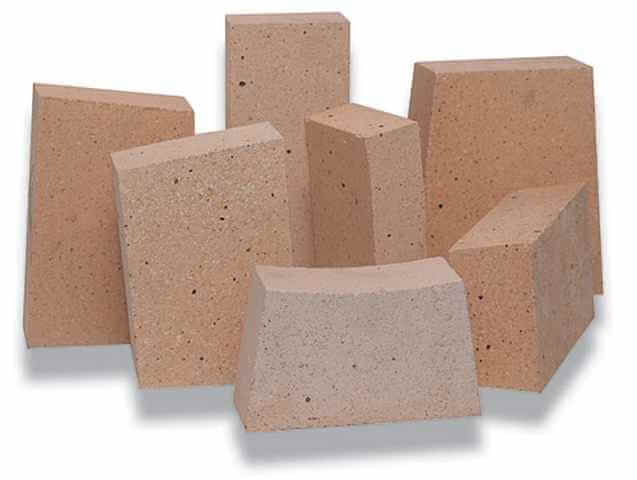
Types and marking of fireclay refractory bricks
Fire resistant blocks can be classified according to several criteria:
By molding method
The design of the forms and features of the technological process provide for the following types of molding:
- casting from slips or melts;
- semi-dry forming;
- melting;
- hot pressing;
- thermoplastic pressing.
By block configuration
For the laying of various structures, the industry produces the following types of fireclay bricks:
- wedge-shaped;
- trapezoidal;
- rectangular (straight);
- arched profile.
By chemical composition
Depending on the additives used that affect the thermal stability and mechanical properties, and the characteristics of the production technology, the following modifications of fireclay refractory blocks are distinguished:
- basic. In the manufacture of such bricks, fire-resistant chamotte clay is used, the mass fraction of which in the working mixture is 70%. Coke or graphite powder can be used as a filler. The material is used for facing furnaces designed for melting Bessemer steel;
- carbonaceous. This modification is characterized by a high percentage of carbon. The main purpose of carbon refractory blocks is blast furnace lining;
- quartz. Due to the use of silicon oxide, the heat resistance of bricks is significantly increased, however, contact with an alkaline medium leads to intensive destruction of the material;
- alumina. Aluminum oxide is used as a special additive. Alumina fireclay brick can work for a long time at temperatures from 1100 to 1300C and is not susceptible to frequent temperature changes. This type of heat-resistant blocks is widely used when laying household stoves, fireplaces and chimneys.
The marking of fireclay bricks includes letters and numbers that reflect the chemical and physical characteristics and overall dimensions of the material. Below are the markings for the most common modifications.
SHA, SHB, SHAK. The materials have high strength and heat resistance (1600 - 1700C), which allows them to be used in all areas of industrial and civil construction. They contain aluminum silicate, which ensures a long service life and resistance to mechanical damage. Another advantage is the optimal price / quality ratio.
ШВ, ШУС. Brick is widely used in industry. High heat capacity indices allow the use of ШВ and ШУС blocks for the construction of gas channels of steam generators; from such blocks, enclosing structures are erected to protect convection shafts.
ShK. This variety is used for the construction of industrial facilities that produce coke.
SHL. SL brick is characterized by high porosity and low specific gravity.The maximum allowable temperature maintained by the blocks is 1300C. The main area of application is furnace lining.
SHTSU. Double-sided end brick. Most often, rotating elements of the furnaces are laid out from the ShTSU blocks.
PB. This modification is characterized by a high clay content, which significantly reduces the heat resistance of the blocks, but the price of the products is quite affordable for a wide range of consumers.
PV. Products are used for interior masonry of stoves and fireplaces. PV blocks provide a long period of operation of the masonry and are capable of operating at temperatures up to 1300C. The scope of the material is limited by its high cost.
Scope and method of application
Dimensions of fireclay bricks.
The purpose of the material is, first of all, to withstand high-temperature influences. So the direct scope of its application is furnaces of any type, except for industrial ones, where the temperature reaches 2000 ° C and more. Fireclay bricks, as a rule, are used to lay out the inner part of the firebox, which interacts with an open flame. In technical parlance, this is called a lining.
Refractories are used in the following types of furnaces:
- smelting;
- intended for heat treatment of metals (hardening);
- household heating and cooking;
- fireplaces, barbecue.
It is especially important to lay out the firebox with refractory bricks when burning coal, which gives a temperature above 1000 ° C, from which ceramic products begin to crumble. Some homeowners, having this opportunity, lay out an entire refractory brick oven.
Such decisions have the right to life, but they cannot be called correct.
When lining the firebox of a brick stove, a gap of 20-40 mm is left between the fireclay and red bricks due to the different coefficients of thermal expansion of the materials. Masonry solutions are also used different. For the main masonry, a clay-sand mortar is made of solid red brick. To lay refractory stones, a solution of fireclay clay is used, thereby ensuring the fire resistance of the entire masonry. The width of the seam during the construction of the firebox is observed only 3 mm against 5 mm at the body of the stove.
For fireplaces made of refractory, you can lay out not only the fuel chamber, but also the arch above the opening. To do this, it is not necessary to cut fireclay bricks, wedge-shaped products are sold ready-made. If the design of the fireplace or stove allows you to make the bottom of the firebox thinner, then fireclay tiles of appropriate sizes are used here. The joints between them are also sealed with a solution of kaolin clay.

